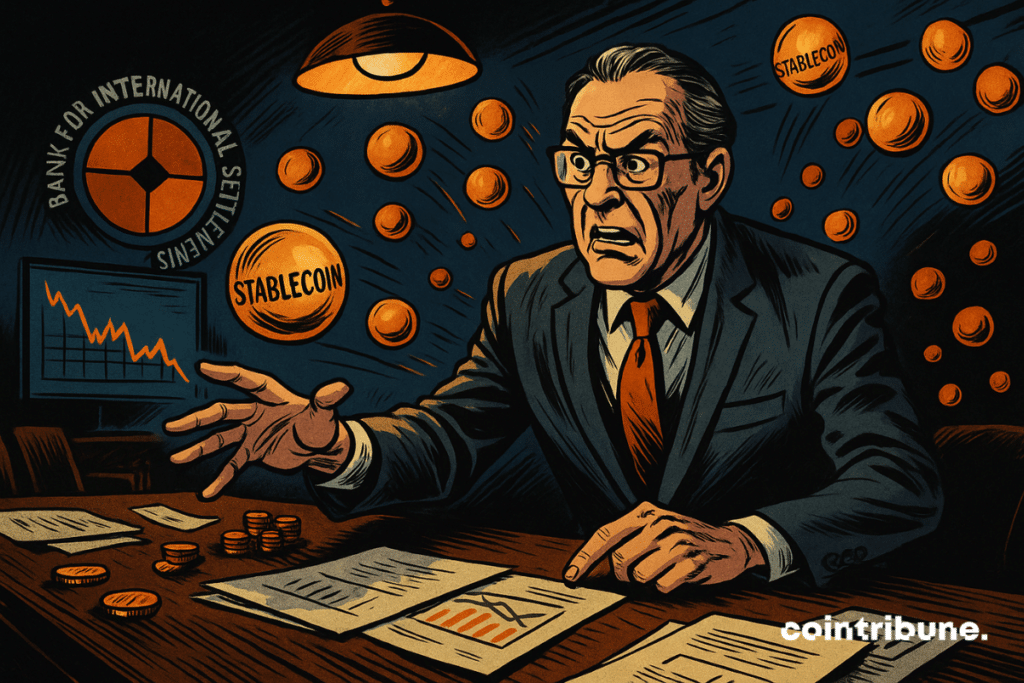BIS Declares Stablecoins a ’Dangerous Illusion’ for Global Finance—Here’s the Bombshell Report
The Bank for International Settlements just dropped a grenade on crypto's favorite 'safe haven.'
Stablecoins? More like unstable gambles—at least according to the BIS's latest fiery critique. The so-called 'central bank of central banks' argues these digital dollar-pegged tokens create systemic risks while failing to deliver on their core promise.
The liquidity mirage
Turns out having 1:1 reserves doesn't mean squat during a bank run—as we saw when three major stablecoins wobbled during the 2023 credit crunch. The BIS report highlights how redemption mechanisms crumble under pressure (shocking, right?).
Regulators circling
With G20 finance ministers now treating stablecoins like financial uranium, the industry's 'move fast and break things' mantra might finally meet its match. One Basel Committee insider quipped: 'Tether's auditors have more job security than its users.'
The irony? This comes just as Visa starts settling transactions in USDC. Buckle up for the ultimate clash between crypto true believers and the old guard—with your retirement funds caught in the crossfire.

In brief
- The BIS criticizes stablecoins for their lack of universality, flexibility, and financial security.
- Their issuance still requires advance payment, limiting their use in economic shocks.
- Stablecoins are deemed vulnerable to fraud, money laundering, and sanctions evasion by the BIS.
- Tokenization, on the other hand, receives the BIS’s favor as an innovation for a more regulated finance.
A triple failure according to the BIS: illusory stability and dubious security
The BIS does not mince words. For it,. These three criteria define a reliable currency in a modern economy. According to its terms, stablecoins WOULD be nothing more than “digital bearer instruments“,.
Unlike money issued by central banks, accepted “at par” and everywhere without friction, stablecoins are. This creates disparity in usage and trust.. The promised universality collapses. Regarding elasticity, the BIS points out that “additional issuance requires full prior payment from its holders“. Nothing like central banks, which can adjust the money supply in case of crisis.
And what about integrity? Again, it is a no. According to the report, “stablecoins have significant gaps in promoting the integrity of the monetary system“. The lack of clear KYC/AML standards makes. Money laundering, terrorist financing, sanctions evasion… the blacklist is long.
Stablecoins vs banks: a return to the 19th-century future
A passage in the BIS report sends a shiver down the spine: “stablecoins resemble the private banknotes of 19th-century United States“. At that time, each bank issued its own currency. Result: instability, fraud, bank panic. Thisis worrying. Stablecoins are not subject to the same guarantees as a traditional bank deposit. Hence the Basel institution’s warnings.
A tweet by Angelica Saldaña nicely summarizes this lexical fracture:
In banking, we don’t talk about stablecoins; we talk about tokenized deposits.
Behind this nuance lies: repackaging innovation into a regulated tool.
The BIS is not against innovation. On the contrary,, which consists of digitizing traditional assets on a blockchain. In its tweet of June 25, it states: “tokenization is a transformative innovation to improve the old and enable the new”.
, government bonds, and commercial currency would, according to it, be the future of the financial system.
Crypto: the crazy numbers and risky bets of the new monetary Far West
The BIS’s firm stance does not mean the end of stablecoins. Their use continues to grow, especially in countries where access to the dollar is restricted.: low cost, cross-border accessibility, settlement speed.
The United States, through several institutions, does not share the BIS’s radical view. The debate is open. What is at stake goes beyond technology; it is a matter of monetary sovereignty.
Key figures to remember:
- More than 15% drop for Circle’s (CRCL) stock after the BIS report publication;
- The potential stablecoin market is estimated at 2 trillion dollars according to the U.S. Treasury;
- 600% increase for CRCL since its IPO, before the correction;
- About 25 billion dollars in daily stable transactions according to March 2025 data;
- 70% of the DeFi market is backed by stablecoins.
In the long term, the battle promises to be as ideological as technological. The word “stablecoin” is becoming.
Stablecoins are divisive. On one side, the BIS warns against systemic risks. On the other, the United States, the world’s largest economy, bets on a $2 trillion market supported by these assets. The future will not be fixed. But the lines are indeed moving.
Maximize your Cointribune experience with our "Read to Earn" program! For every article you read, earn points and access exclusive rewards. Sign up now and start earning benefits.

